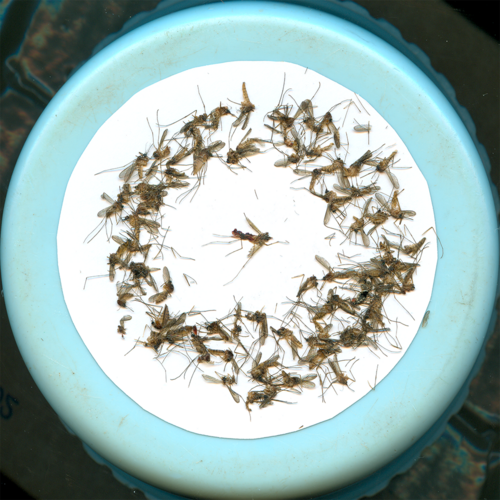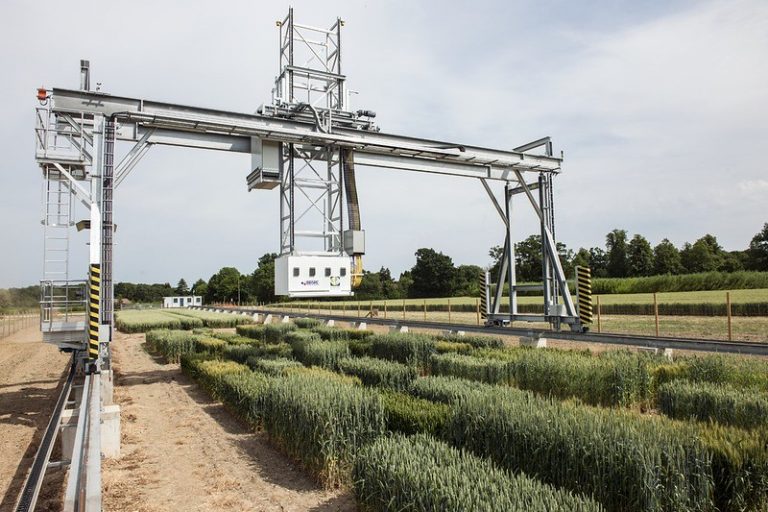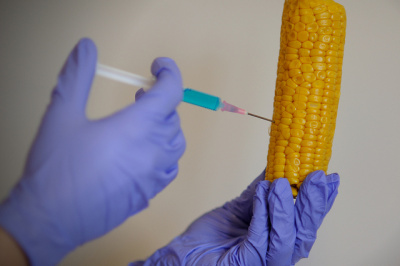Actualités
GMO authorisations : « burden » reduction gone unnoticed

Since 2013, the regulatory framework of GMOs has been made less strict. The main change is indisputably the introduction of a derogation enabling a risk assessment to take place without the companies having to provide experimental data. Inf’OGM explains how this major change occurred through some of the most emblematic cases.
When the European Commission adopts Regulation 503/2013 on 3rd April 2013, it enshrines in the GMO law some already tried practices. These mainly consist in the adoption of a single authorisation decision covering more than one GMO and in a risk assessment which isn’t based upon experimental data [1]. However, the study of the cases concerned tends to show that the origin of these changes is rather the result of little arrangements than of a strict application of the law.
A the beginning of the changes which acquired normative power with Regulation 503/2013 there is a biological phenomenon. In order to reproduce, a cultivated plant produces gametes which correspond to human and animal ova and spermatozoa. When for example this is a GM plant with four transformation events, the harvest from this plant will include not only grains containing all four transformation events, but also grains containing only three, two or one events. This is called segregation. This phenomenon will be used as an argument to justify important changes.
Maize Mon89034*1507*88017*59122, the mercenary
This case, which was handled between 2008 and 2013, has paved the path for an important change. Applications don’t necessarily have to cover one GMO (case by case) but may cover more than one GMO: the stacked GMO and its sub-combinations. That the latter are the result of segregation occurring in the field or are produced in a laboratory is not an issue.
In October 2008, Monsanto and DowAgroSciences wrote to the Czech Republic to submit an application to commercialise maize Mon89034*1507*88017*59122 [2]. The application is immediately notified to the European Food Safety Authority (EFSA) [3].
In their application, Monsanto and DowAgroSciences specify the type of products they intend to commercialise include “all uses of MON 89034 × 1507 × MON 88017 × 59122 grain equivalent to the uses of any other maize grain.” [4]. The footnote is of great importance as the companies explain that “maize grain is the product of genetic segregation of the seed from which it is produced. Consequently MON 89034 x 1507 x MON 88017 x 59122 grain includes the combined event product and any combination of these events”! The two companies are discreet but clear: the cultivation of the stacked GM Mon89034*1507*88017*59122 maize will lead to the occurrence of Mon89034*1507*88017*59122 maize grains but also of sub-combinations such as Mon89034*1507*88017 or 1507*88017*59122, Mon89034*59122.
This footnote makes Efsa want to clarify the scope of the application. In a letter dated 29th July 2010, Efsa asks whether the application “includes any combination of the single events” [5]. After having received a reply, Efsa delivers a favourable opinion on “genetically modified maize MON 89034 x 1507 x MON 88017x 59122 and all sub-combinations of the individual events as present in its segregating progeny” on 27th September 2010 [6].
But the European Commission doesn’t agree with this opinion. In a letter dated 20th October 2010, the Commission explains that Efsa’s expression “present in its segregating progeny” is different from the one used by the two companies [7]. As it happens, we don’t know where the Commission believes are the words used by the companies but in their initial application Monsanto and Dow explain that the sub-combinations are the result of “genetic segregation of the seed”. Nevertheless, in the letter dated 20th October 2010, the European Commission asks Efsa to complement its opinion to cover all sub-combinations “independently of their origin” (e.g. segregating progeny or not). This expression will become fundamental three years later.
On 24th November 2010, Efsa’s reply to the Commission is firm (cf. Doc 2539). Quoting discussions between the companies and the European Commission, Efsa repeats that the application includes the stacked maize and the sub-combinations produced by genetic segregation. Efsa further says that if the European Commission wants an opinion on the sub-combinations “independently of their origin”, it should give Efsa an official mandate. This mandate will be given the 1st February 2011 [8] and accepted by Efsa two months later given the “complexity of the issue” [9].
Efsa’s opinion was finally published on 8th November 2011 [10]. In its opinion, Efsa explains that the expression “independently of their origin” includes, as required by the European Commission, the sub-combinations occurring by natural segregation and those “arising from conventional breeding programs”. The widening of the scope of the processes by which sub-combinations are produced is not the only striking element of the opinion delivered by Efsa. So is Efsa’s conclusion that it is “unlikely” that the sub-combinations have adverse effects on human and animal health and the environment. Efsa indeed recognises that in order to carry out the risk assessment, it had experimental data only concerning the stacked maize Mon89034*1507*88017*59122, the maizes containing one transformation event (Mon89034, 1507, 88017 et 59122), and the sub-combinations 1507*59122 and Mon89034*Mon88017 produced by conventional cross-breeding. For all the other sub-combinations included in the application, “no experimental data were available”! It is a paradox that Efsa nevertheless concludes that it is “unlikely” that the sub-combinations pose adverse effects as the Authority itself considers “conclusions reached for segregating progeny cannot automatically be extended to sub-combinations bred using conventional breeding programs”!
In the end, the European Commission authorised the placing on the market of the stacked maize and its sub-combinations “independently of their origin” on 6th November 2013 – the Member States having failed to agree on the Commission’s decision proposal [11]. In its decision, the Commission explains that “the application also covers all possible combinations of the single GM events constituting MON89034 × 1507 × MON88017 × 59122 maize”. Using the argument of the genetic segregation (“When for example seeds of a maize GM stack with four different single GM events are cultivated, the resulting harvest contains not just grains with all four different GM events, but also grains containing only one, two or three different single GM events, and grains that do not contain any of the four single GM events (negative segregants))”, the European Commission concludes that each sub-combination has to be considered as a “specific GMO” and that “it should therefore be ensured that all possible combinations of the single GM events constituting it are authorised when the GM stack is authorised”.
Thus, the marketing authorisation covers the stacked maize and its sub-combinations, save sub-combinations MON89034*MON88017 and 1507*59122, “the applicants (having) clarified (the 13th March 2013) that the application no longer covers these GM maizes”. These GM were indeed already authorised by a previous decision. But, as we will see, excluding already authorised sub-combinations from the scope of an application will not remain automatic.
Maize Bt11*Mir162*Mir604*Ga21, less data and repealing of previous decisions
With this case, the possibility to get a marketing authorisation for several GMOs by providing few or no experimental data for the risk assessment is confirmed. But, there is also something new: the previous authorisation decisions are repealed and as a result, the 10-year validity of the marketing authorisation restarts from zero!
Submitted in 2008 by Syngenta, the application for the authorisation of maize Bt11*Mir162*Mir604*Ga21 also covers one sub-combination: maize Bt11*Mir162*Ga21 [12]. The handling several GMO in one application not being a routine operation yet, Efsa asks the company to divide the application into two separate applications “for formal reasons” according to Syngenta [13]. This will be done on 6th February 2009 [14]. Syngenta specifies that the technical dossier and the studies concerning these two maizes remain common to both applications. The company further says that maize Bt11*Mir162*Ga21 was produced from the combination of events Bt11, Mir604 and Ga21 using conventional breeding techniques, and that the applications for authorisation for maizes Bt11*Ga21, Bt11*Mir604, Mir604*Ga21 and Bt11*Mir604*Ga21 are being reviewed by Efsa. Admittedly, the maizes were produced using conventional cross-breeding methods but they can also, being sub-combinations, occur in the field after the cultivation of stacked maize Bt11*Mir162*Mir604*Ga21.
And precisely, in 2013, when the practice consisting in authorising the stacked GMO together with its sub-combinations is enshrined in Regulation 503/2013, the scope of the application submitted in 2008 by Syngenta is modified again (5th July 2013). This time, the modification doesn’t consist in dividing an application into distinct applications but to merge separate applications into one. In its letter to the European Commission [15], Syngenta declares that it “agrees” that its application for authorisation of maize Bt11*Mir162*Mir604*Ga21 also covers the ten sub-combinations, save maize Mir162*Mir604*Ga21 – without further explanation (the final authorisation decision will, however, cover this sub-combination as well). If one is to believe Syngenta’s letter dated 5th July 2013, it is the European Commission who asked both for the widening of the scope of the application to all the sub-combinations and for the merger of the already submitted applications in a letter dated 28th June 2013 – that is to say the day of the entry into force of Regulation 503/2013!
There is another novelty in this Syngenta maize case. The company also says it “agrees” for the previous authorisation decisions to repealed “when the GM stacks are authorised”! This didn’t happen in the case of maize MON89034*1507*MON88017*59122 we studied above, where already authorised sub-combinations remained authorised under their previous authorisation.
In the beginning of December 2015, Efsa delivers a favourable opinion concerning the stacked maize and its sub-combinations “independently of their origin” [16]. In its opinion, the Authority informs the European Commission that it followed the “weight-of-evidence approach” for six out of ten sub-combinations as few or even no experimental data enabling the risk assessment of these six sub-combinations were submitted…
Efsa finally concludes that “for some subcombinations that could be produced by conventional crossing through targeted breeding approaches, little or no specific data were submitted, giving rise to uncertainties due to data gaps”. Nonetheless, according to Efsa this can be overcome if “the applicant collate(s) relevant information, if these subcombinations were to be created via targeted breeding approaches and commercialised in the future”, targeting breeding approaches meaning conventional crossing.
On 16th September 2016, the European Commission adopts the final authorisation decision – the Member States having failed twice to agree on the proposal decision, in April and in June 216. In the decision, the Commission merely specifies that “the authorisation holder (Syngenta) shall collate information on the expression levels of the newly expressed proteins” [17]. The Commission also repeals the previous authorisation decisions concerning four sub-combinations. And although maize Mir162*Mir604*Ga21 wasn’t on the list of sub-combinations prepared by Syngenta in its letter dated 5th July 2013, it is nevertheless “assessed” by Efsa and covered by the European Commission’s decision adopted in September 2016…
Maize Bt11*59122*Mir604*1507*GA21: the questioning of a risk assessment without data
Going ever further in the “burden” reduction, this case illustrates that a risk assessment can take place when absolutely no data has been submitted. This change in the practice of the risk assessment is not unanimously supported by Efsa’s experts.
On 1st July 2011, Syngenta submits an authorisation application for maize Bt11*59122*Mir604*1507*Ga21 to the German authorities [18]. Even though the letter accompanying its application mentions the sub-combinations (doc2546), it is only in February 2014, according to the Commission’s description in the final authorisation decision [19], that Syngenta extends the scope of the application to all sub-combinations, excluding maize 1507 × 59122 (already authorised in 2010).
Five years later, the 15th July 2016, Efsa delivers a favourable opinion concerning the maize and twenty of its sub-combinations “independently of their origin” [20]. But this time, the lack data is not limited to some sub-combinations: for none of the twenty sub-combinations did Syngenta submit data. Efsa explains it again followed the “weight-of-evidence approach” concerning the twenty sub-combinations that can be produced by “conventional crossing through targeted breeding approaches”. The Authority adds, as it did with maize Bt11*Mir162*Mir604*Ga21, that “in order to reduce the consequent uncertainties and to confirm assumptions made for their assessment, the EFSA GMO Panel considers that the applicant should provide relevant information”, if these sub-combinations were to be created via conventional crossing.
However, this time, an Efsa expert delivers a minority opinion. The opinion underlines that not one of the twenty sub-combinations has been previously assessed. What’s more, according to the dissident expert, Syngenta has merely presented a compilation of general considerations of different nature to claim that the missing data were not necessary for the risk assessment. This is all the more paradoxical because Syngenta stated the data in question has been produced.
But this doesn’t matter, as the European Commission authorises the marketing of the maize and its twenty sub-combinations on 4th July 2017 (doc2438 déjà référencé), without repealing previous decisions because none of the sub-combinations had been previously authorised. Again, the authorisation decisions states that “the authorisation holder shall collate information on the expression levels of the newly expressed proteins”.
Maize Bt11*Mir162*1507*Ga21, a picture of the future?
With the case concerning Syngenta’s maize Bt11*Mir162*1507*Ga21, the whole array of possible future practices seems to take shape. This is how the perfect picture good look like: a single authorisation decision covering a stacked GMO and its sub-combinations, no submission of experimental data for the risk assessment, an authorisation that doesn’t require to submit missing data and, if need be, a repeal of previous authorisation decisions.
On 30th July 2010, Syngenta submits an application for authorisation of maize Bt11*Mir162*1507*Ga21 in Germany. In the letter accompanying the dossier, the company recalls that the single transformation events Bt11, 1507 and Ga21 have already been authorised and the transformation event MIR162 is being reviewed by Efsa [21]. On27th September 2010, Efsa acknowledges receipt of the dossier [22]. At this stage, there is no reference to the sub-combinations – neither as product of genetic segregation nor “independently of their origin”. This is not surprising as, in 2010, this practice was only just beginning (see paragraph on the case of maize Mon89034*1507*88017*59122).
The application was submitted in 2010, and the public fact sheet was published by Efsa in March 2012, still with no reference to the sub-combinations [23]. However, discussions between Efsa and Syngenta between 2012 and 2016 have led to a modification of the scope of the application: the application now covers the stacked maize and three of the possible sub-combinations (Bt11*MIR162*1507, MIR162*1507*GA21 et MIR162*1507), “independently of their origin” [24].
In May 2018, Efsa delivers an opinion [25] concluding to the absence of risks related to the use of the stacked maize and the three sub-combinations. Efsa adds that it had already assessed the risks of seven sub-combinations not included in the application.
Contrary to previous cases, there is no recommendation concerning the need to provide complementary information if the sub-combinations were to be created via “targeted breeding approaches”. Efsa merely states that “for the three subcombinations included in the scope, for which no experimental data were provided”, there should be no safety concerns.
Again, one expert disagrees and delivers a minority opinion which is “mostly a reiteration of (the) previous one”. The dissident expert explains that “a risk assessment done without specific data and based on assumptions and indirect considerations extrapolated from data obtained with the single events, the four-event stack (e.g.the stacked maize) and subcombinations previously submitted and assessed cannot be considered as strong and reliable as a comprehensive one based on a complete set of data”.
Will the European Commission follow Efsa in this evolution of the practice of the risk assessment, where no data are submitted and are not even required once the authorisation decision is adopted? We have to wait and see.
But there is a final case that should draw our attention: that of a stacked cotton. This case took the opposite direction from the cases studied above, as the scope of the application was narrowed (see text box below).
An illegal attempt
After 2013 and the adoption of Regulation 503/2013, what looks like an attempt to get a marketing authorisation which would have been illegal took place.
On 15th July 2015, Efsa acknowledged receipt of an application for authorisation from Bayer CropSciences submitted in the Netherlands…four years earlier, in 2011 [26]! That year, Bayer submits an application for authorisation of the stacked cotton GHB614*LL25*Mon15985 and sub-combination LL25*Mon15985. Concerning the latter, an application for authorisation had been submitted in 2006 [27] before being withdrawn in February 2009. Indeed, Bayer explained that “in the near future (it intended) to submit a triple stack new submission that will include all additional information required for the EFSA-GMO-NL-2006-35”, e.g. cotton LL25*MON15985 [28].
In 2011, Bayer logically submits an application for authorisation of cotton GHB614*LL25*Mon15985 and sub-combination LL25*Mon15985, as we can see in the undated initial version archived by Inf’OGM [29]. This is an important document as things changed between 2011 and 2015: sub-combination LL25*Mon15985 was withdrawn from the application, as shows the public version of the dossier published on Efsa’s website [30]! Why has the sub-combination, initially covered by a distinct application in 2006, been included in the application concerning the stacked GMO only to be withdrawn in the end?
The French Anses expert committee’s opinion delivered on 1st April 2016 is enlightening [31]. In its opinion, Anses explains it didn’t carry out the initial expertise of the application because “the application at that time also included sub-combination LLcotton25 x MON15985, which is not consistent with the provisions of Regulation (UE) n°503/2013(Annex II, part I, paragraph 2,(2))”. Annex II of the Regulation indeed states that for GMOs for which “cultivation […] does not lead to the production of genetically modified material containing various combinations of transformation events (non-segregating crops), the application shall only cover the combination which is to be placed on the market”. However, as Anses explains, cotton LL25*Mon15985 “is not the product of natural segregation produced from cotton GHB614*LLcotton25*MON15985, which is homozygote”. In other words, biologically this sub-combination cannot occur by genetic segregation in the field and thus it is biologically impossible to call it… a sub-combination! The Anses analysis proved to be the right one as “on 14th January 2016, Efsa (informed the Member States) that the application only included cotton GHB614 x LLcotton25 x MON15985 and that cotton LLcotton25 x MON15985 was not included”.
The chronology of these several cases shows that the administrative management of the system has changed over time and that the risks assessment carried out by Efsa had to follow the movement, sometimes with reluctance. Regulation 503/2013 has given normative force to a practice resulting from the European Commission and the companies’ interpretation. Is it legal? Inf’OGM will address the matter in another article.












